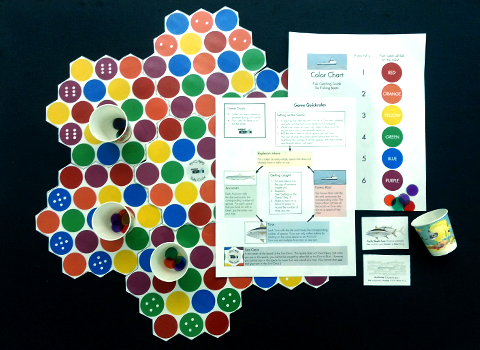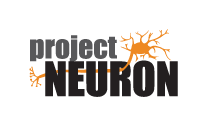
This game was designed to be used in a classroom with one teacher and about 10-30 students in groups of 5-7. The following materials are all available for free download on our website, and we have listed the recommended preparation or use for each material. The lesson linked below contains a detailed lesson plan with connections to NGSS, learning objectives, background knowledge, and suggested implementation in an integrated curriculum unit.
- Game board for each group: single-sided color print, cut, laminated, and assembled with tape/velcro
- Fishtags for student cups: single-sided color print, cut and attached to cups
- Quickrules for each group: single-sided color print, laminated
- Color chart for teacher: single-sided color print, laminated
- Awards for students (optional): one of each
For the interpretation and data analysis portion of the activity, you will need
- Class Data for teacher: Microsoft Excel spreadsheet for compiling data and generating graphs
- "Mercury in the Environment" reading for investigating the mechanisms of biomagnification
- "Cat Daning Disease" reading case-study about the effects of mercury poisoning
- Student sheet for each student: double-sided grayscale print
To play the game, we also recommend that you have
- Computer with Microsoft Excel
- Projector for computer
- Game pieces (tiddly-winks, pennies, etc.)
- Small cups to hold game pieces
Game and Curriculum designed by James Planey, Tommy Wolfe, Robert Wallon, Chandana Jasti, and Hillary Lauren. Graphics and illustrations by Hillary Lauren.
In Bio Bay, students play as tuna and anchovies trying to collect as many tokens (food) as possible. There are plentiful zooplanktons for the anchovies, but you might get caught by a tuna! And anyone could get caught by the Fishing Boat (the teacher) at any time! How long can you survive? Can you collect the most tokens?
This game models biomagnification of a toxicant (mercury) in an aquatic ecosystem. After students play the game, they engage in NGSS practices such as Data Analysis and Interpretation and Developing and Using Models to explain how biomagnification works in the game.

